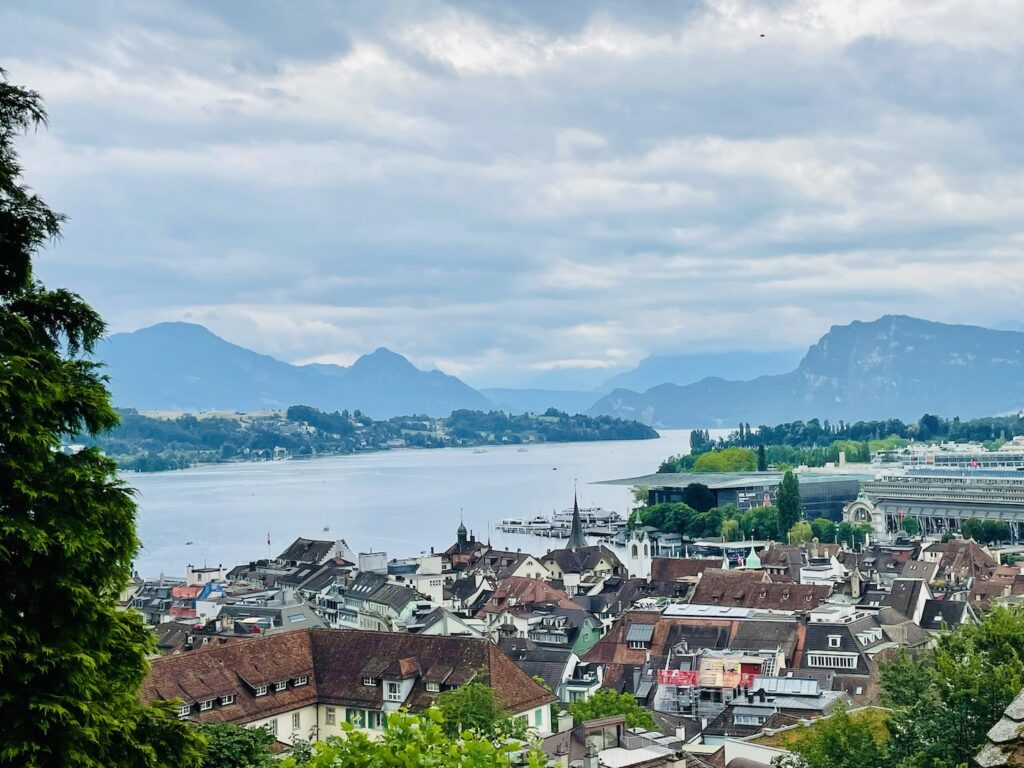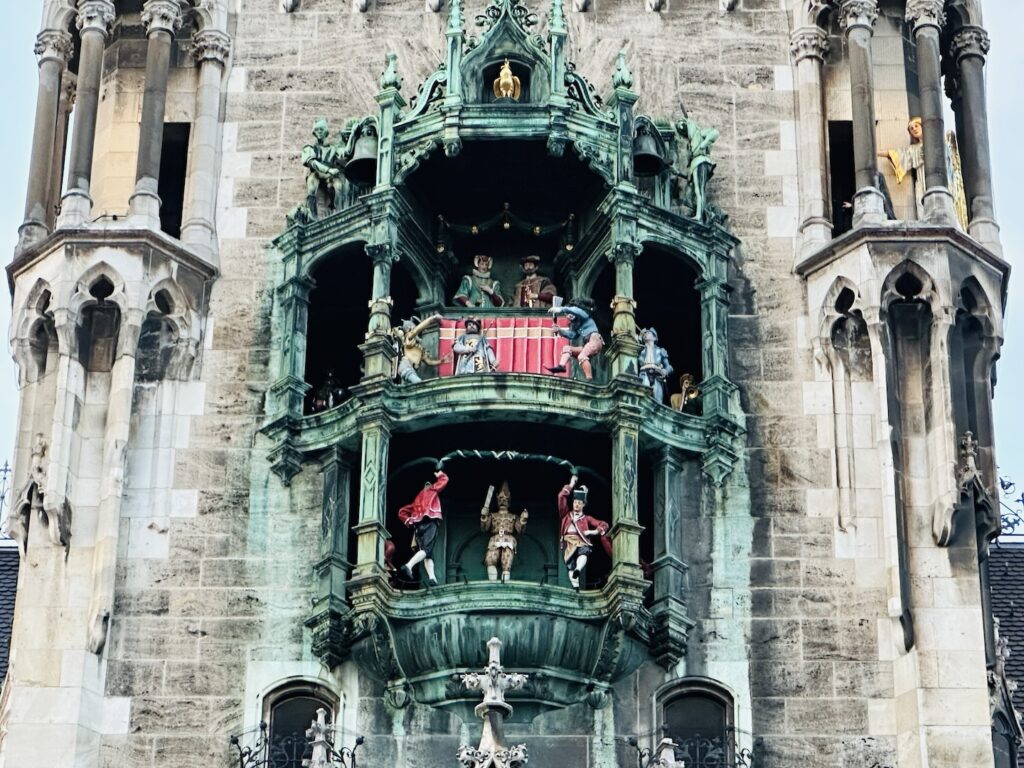Southwest Florida has many options for the traveler. There are plenty of tours to take or you can choose to fashion your own daily itinerary. My husband and I flew into the Fort Myers airport, rented a car, and parked our belongings at a hotel on Marco Island. From there, we explored Everglade City, Fort Myers, Naples, Sanibel Island, and Captiva Island over several days. Here are the highlights that I recommend should you choose to visit this delightful area of the Sunshine State.
Marco Island
Why Marco Island? The water! The beaches! With a rental car (we rented ours at the Fort Myers airport), it’s a great home base for exploring the Everglades to the south as well as some cities (Naples, Fort Myers) and other islands (Sanibel, Captiva) to the north.
Marco Island is a barrier island just off — and connected with bridges — to the mainland. There’s the Gulf of Mexico to the west; Marco Island and the bays lay between the Gulf and the coast of Florida.
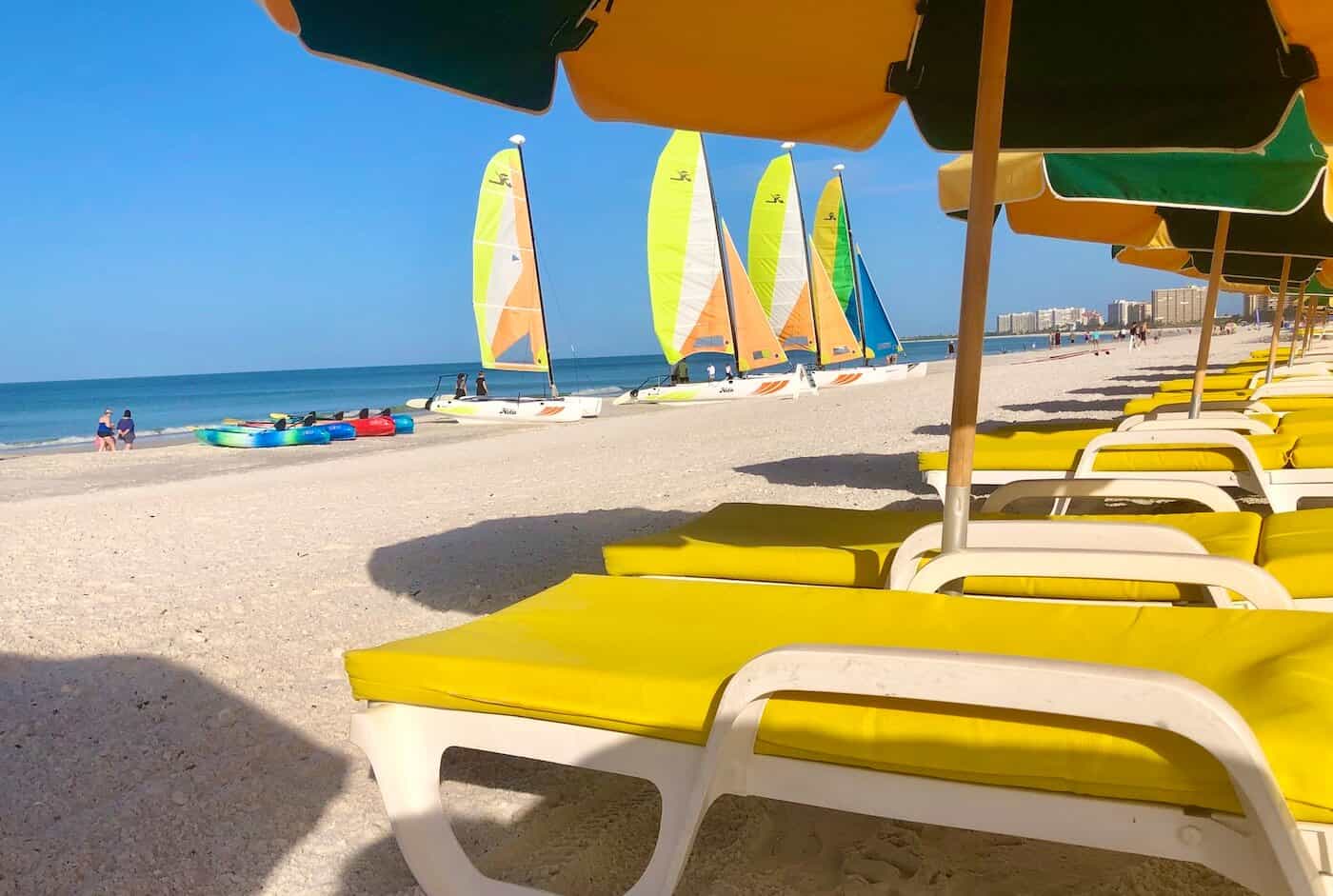
The location on the beach made it the best place for us. Being near the water just makes me happy; it soothes my soul. My husband and I enjoyed strolling along the beach in the mornings (the sand is nice and firm for walking) before setting out for a morning — or day — of exploring. When we returned in the afternoon, we often lolled on the beach (me) or enjoyed a beverage poolside (Pop) before watching the beautiful sunset and heading out to dinner.
There are more than enough terrific restaurants to keep you satisfied while you’re visiting. (Some of our favorites are listed at the end of this post.) We stayed in a resort hotel on the beach (there are so many along the southern Gulf Shore), but there are plenty of other lodging options, as well.
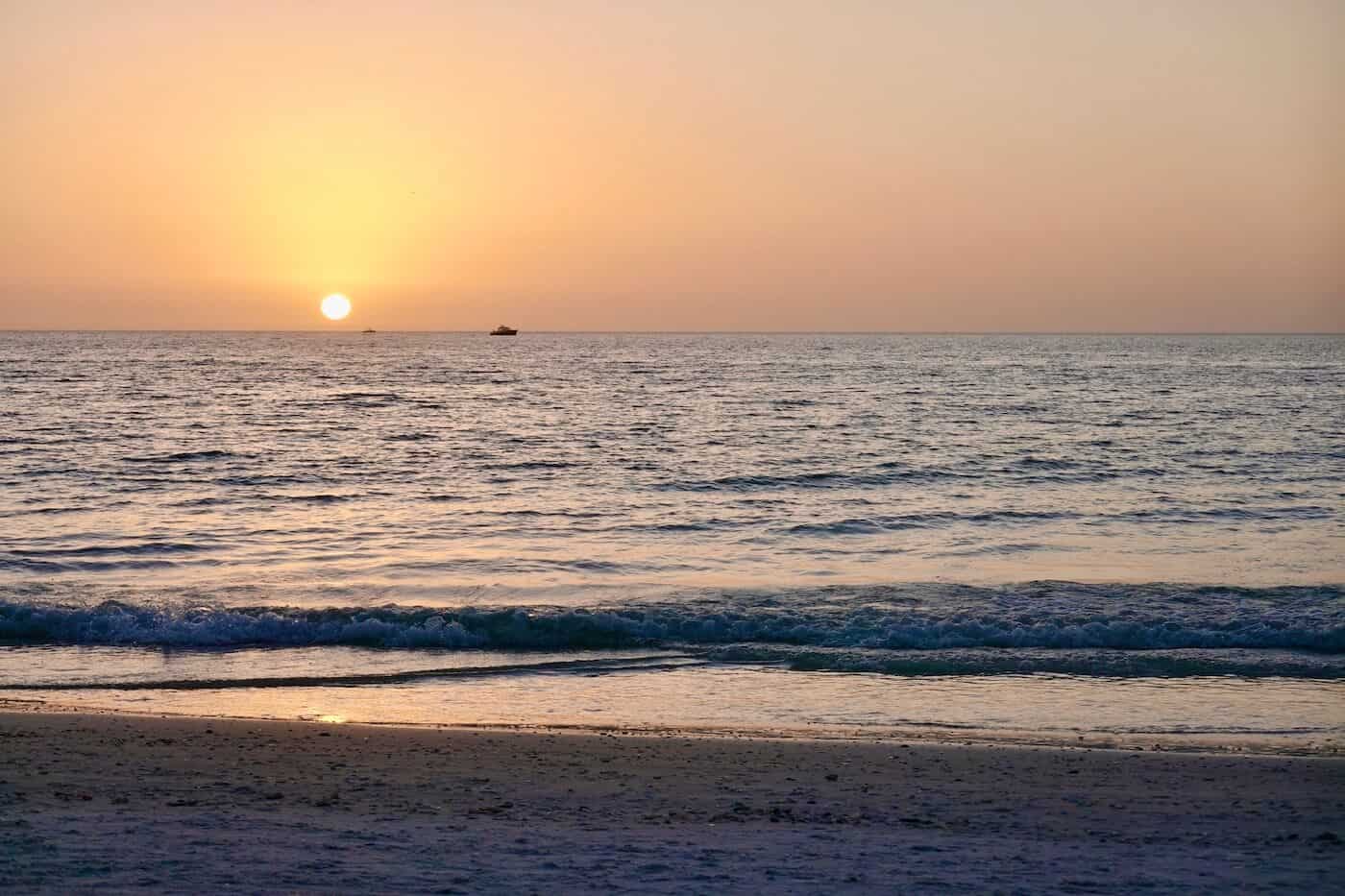
Everglade City
Being just north of the Everglades brings lots of choices of how to learn more about its unique ecosystems. You can choose from half to full-day tours that provide a good overview and a unique experience. You choose how you want to view nature: on foot, by boat, by airboat, or by swamp buggy — or a combination thereof. Check online for tours that are available when you are visiting.
On the Road to Everglade City
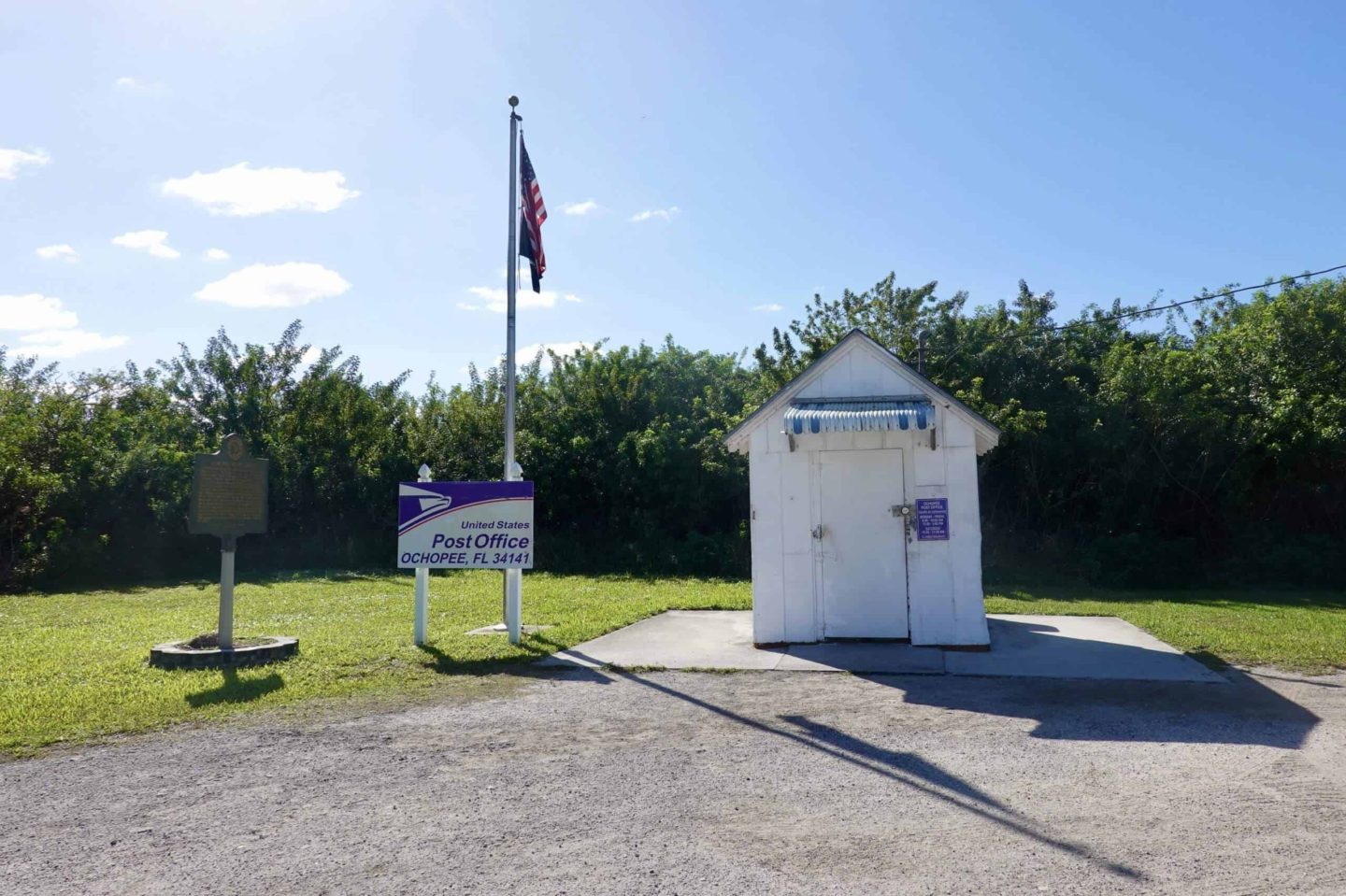
In Everglade City
We chose to explore Everglade City, which is just north of Everglades National Park, because of the time we had available. Everglade City is about 40 miles from Marco Island. With more time, we would have ventured further into the national park. Having said that, we enjoyed what we saw in and around Everglade City.
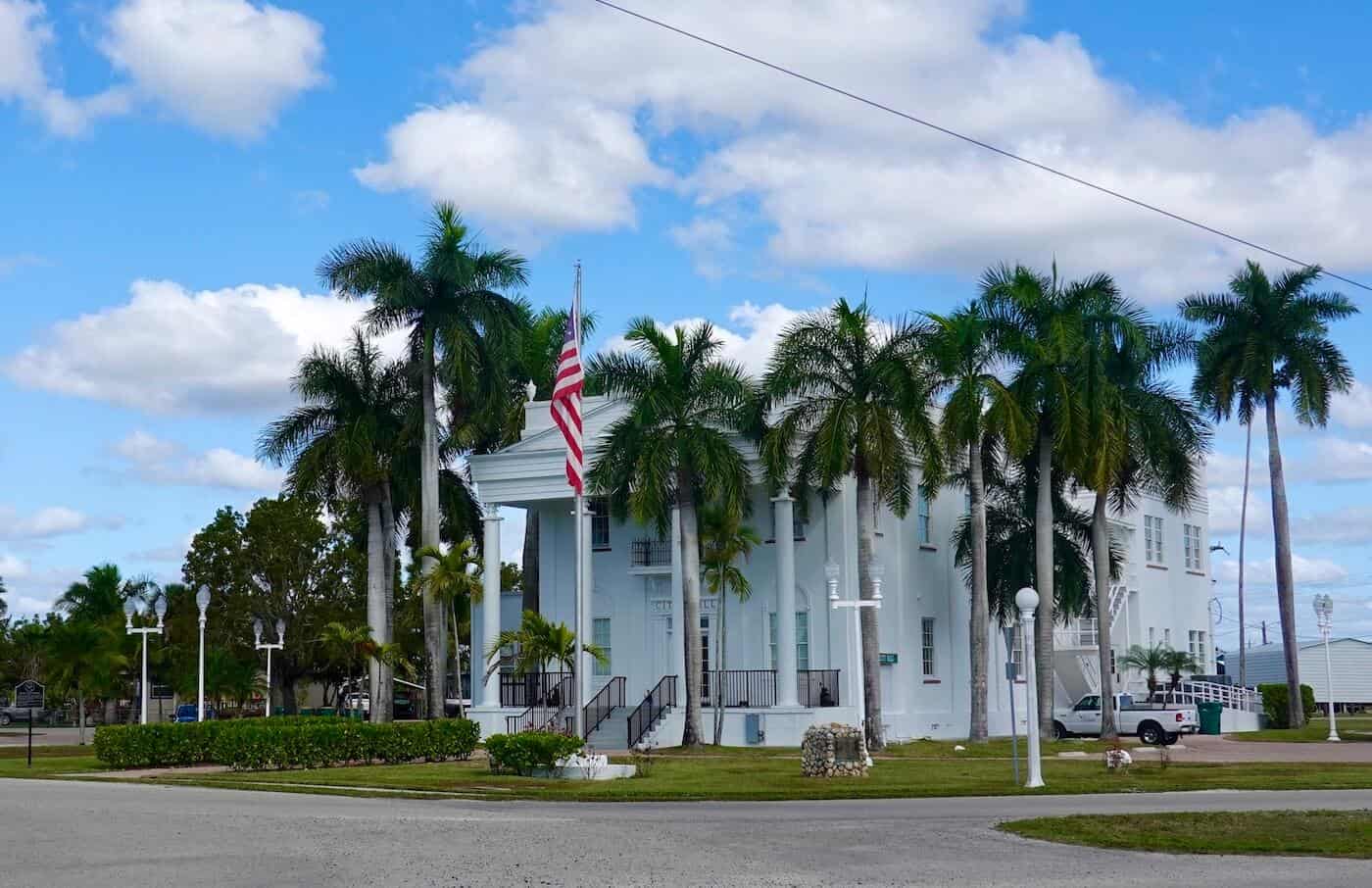
Airboat Rides
Airboat rides are popular in this area of Florida. We opted for Speedy’s Airboat Rides (located just south of Route 41 along Route 29) which was the perfect choice for us. The airboat captain narrates the trip through the mangroves and marshland, explaining what visitors are seeing along the way. Speedy’s was highly recommended by a local (and well-rated online), so we went with them. Good choice!
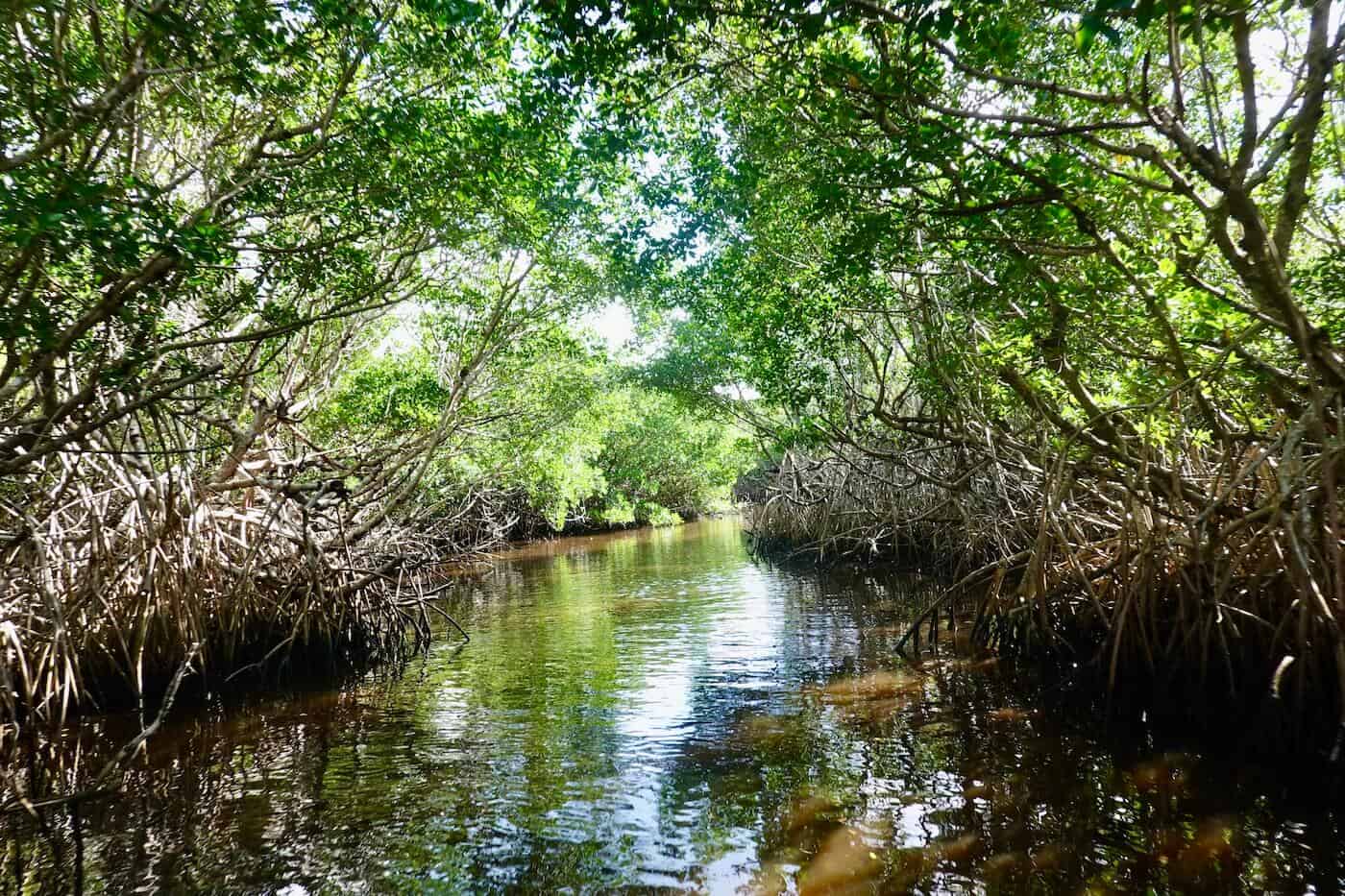
Although we saw plenty of birds, we weren’t lucky enough to see alligators or manatees. At the time we visited, the water was quite shallow, so that helped to account for no gator sightings. The manatees, we learned, preferred warmer water; we were advised to visit Manatee Park (further north and mentioned in this post below) to have a good chance at manatee sightings. It seems manatees prefer the water there that is warmed by a nearby power plant and natural springs that provide water at a fairly steady — and warmer — temperature.
Roadside Parks to View Wildlife
There are several places to view Florida wildlife — all along a stretch of Route 41/Taimini Trail that takes you from Marco Island to Everglade City. From west to east, they are Big Cypress Bend, Big Cypress Swamp, H.P. Williams Roadside Park, Kirby Storter Roadside Park, and Big Cypress National Preserve.
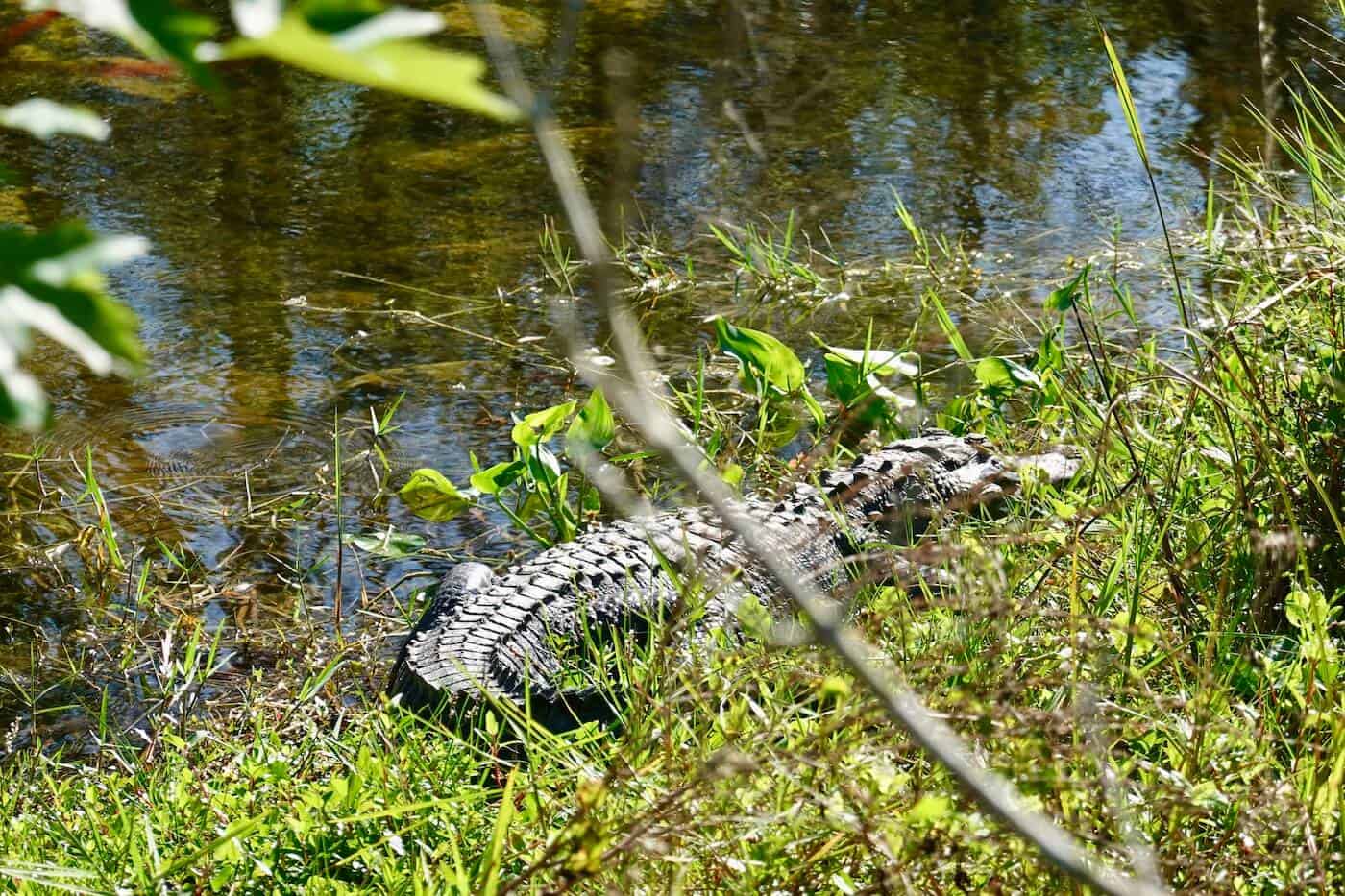
We stopped at H.P. Williams Roadside Park, at Turner Road, 7 miles on Route 41 past the intersection with Route 29. It’s actually a boardwalk where you can easily view wildlife: alligators, fish, and birds. Plus you can continue to drive down Turner Road to continue to view other wildlife.
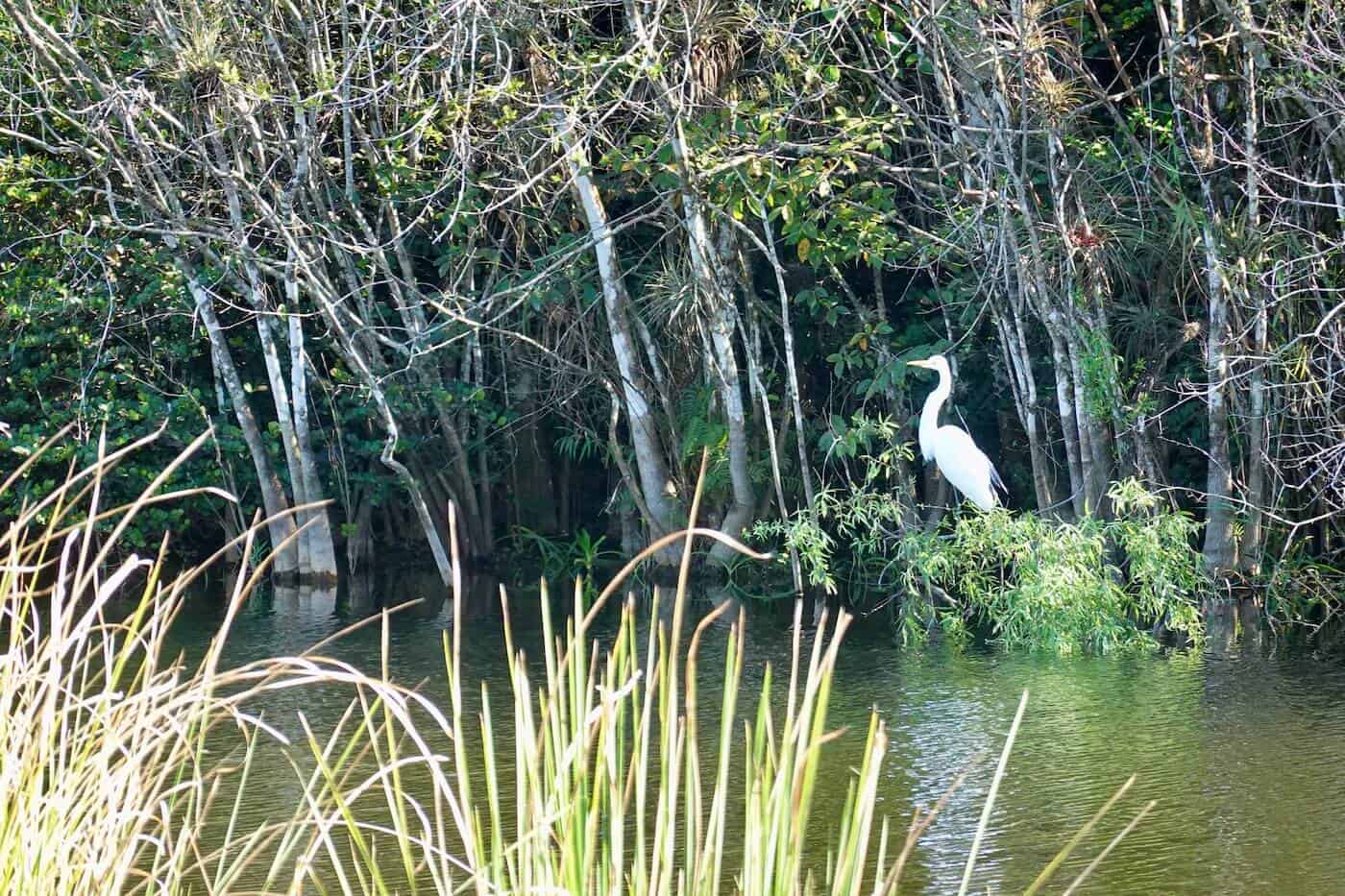
National Park Service Gulf Coast Visitor Center
There’s the National Park Service Gulf Coast Visitor Center down Route 29 (south of Route 41). Rangers there can help you map out your Everglades journey. You can also get boat rides through the Ten Thousand Islands here.
Chokoloskee Island
Continue along Route 29 (south of Route 41), cross a bridge, and you arrive at Chokoloskee Island. It’s tiny, but it has two special treats for visitors.
Smallwood Store
Continue down Route 29, and you’ll end up at the end of the road — literally. Here sits Smallwood Store (now a privately owned museum) just a few yards from the water’s edge on Chokoloskee Island. Back in the day, its location made it perfect for folks to boat over for provisions at Ted Smallwood’s trading post.
Built in 1906, Smallwood Store is packed with local history, and some of it is quite colorful. It was once a post office, a place to get things (like shoes) repaired, a place to buy homemade jams and bread, and a trading post used by early settlers and Native Americans. In fact, Native Americans would purchase items they needed here and pay in otter skins or other natural goods.
Back in the day, this store didn’t have regular hours. The Smallwood’s (Ted, his wife, and his kids) did business any time of the day or night, depending on what their customers needed. The store was added to the National Register of Historic Places in 1974.
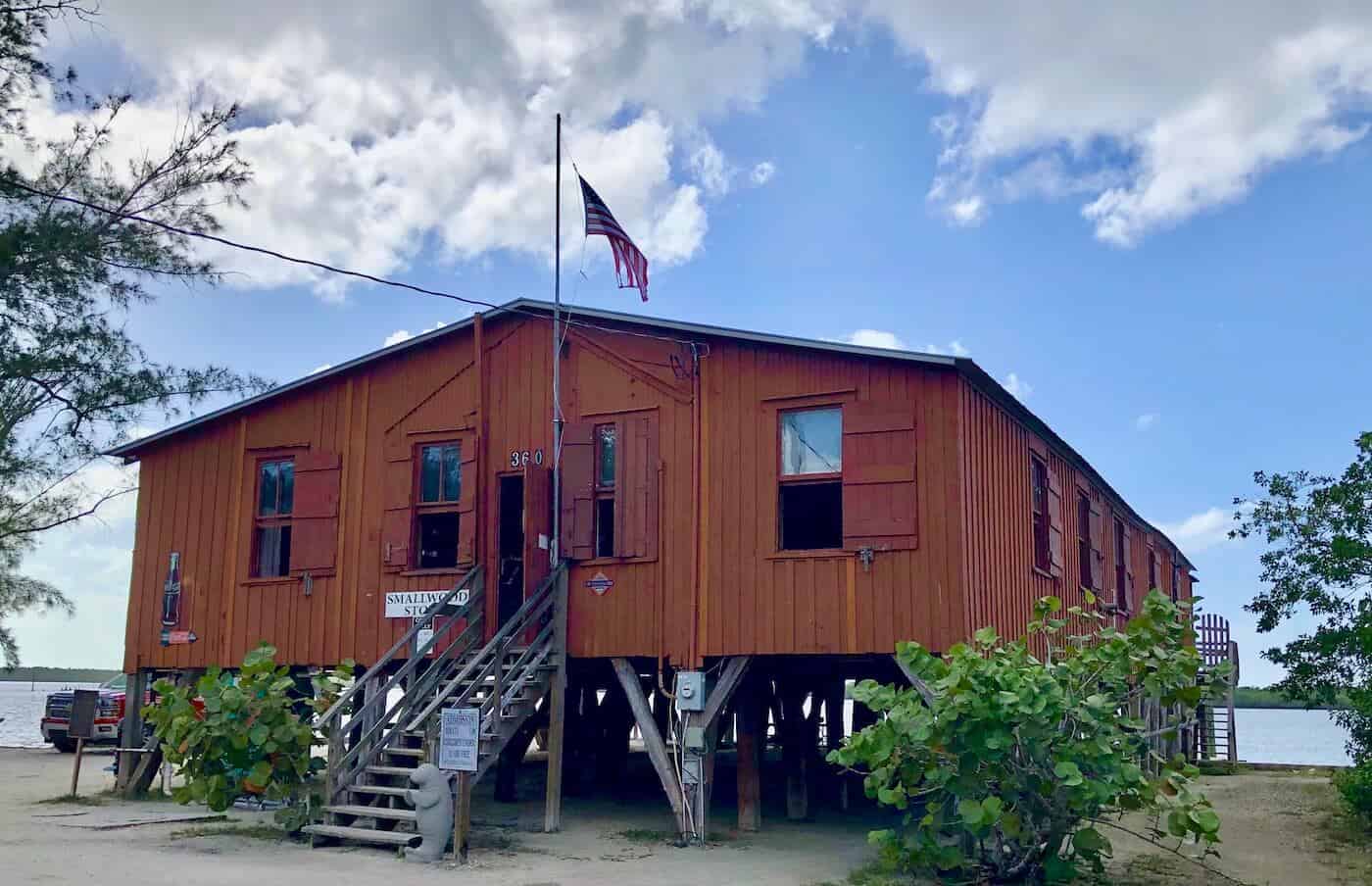
Smallwood Store is also known, however, for being the spot where outlaw “Bloody” Ed Watson was shot and killed in 1910. He had some history of his own. Newspaper articles claim he had a violent temper and often killed others with whom he disagreed — or workers he didn’t want to pay — by knife or bullet.
The locals had had enough of “Bloody” Ed Watson. When a group of them learned that he was expected one day at Smallwood Store, where he regularly purchased provisions, he was met with an angry mob of locals. They killed him. One newspaper article stated that when a hurricane later came through the area, it unearthed several dozen skeletons on Ed Watson’s land.
Smallwood Store is an interesting place to visit. When you enter, you’re instantly taken back in time as it’s set up much as it was originally. There are plenty of artifacts and accompanying written narratives to help you understand the significance of what you’re viewing. There’s so much to take in, so don’t rush through here.
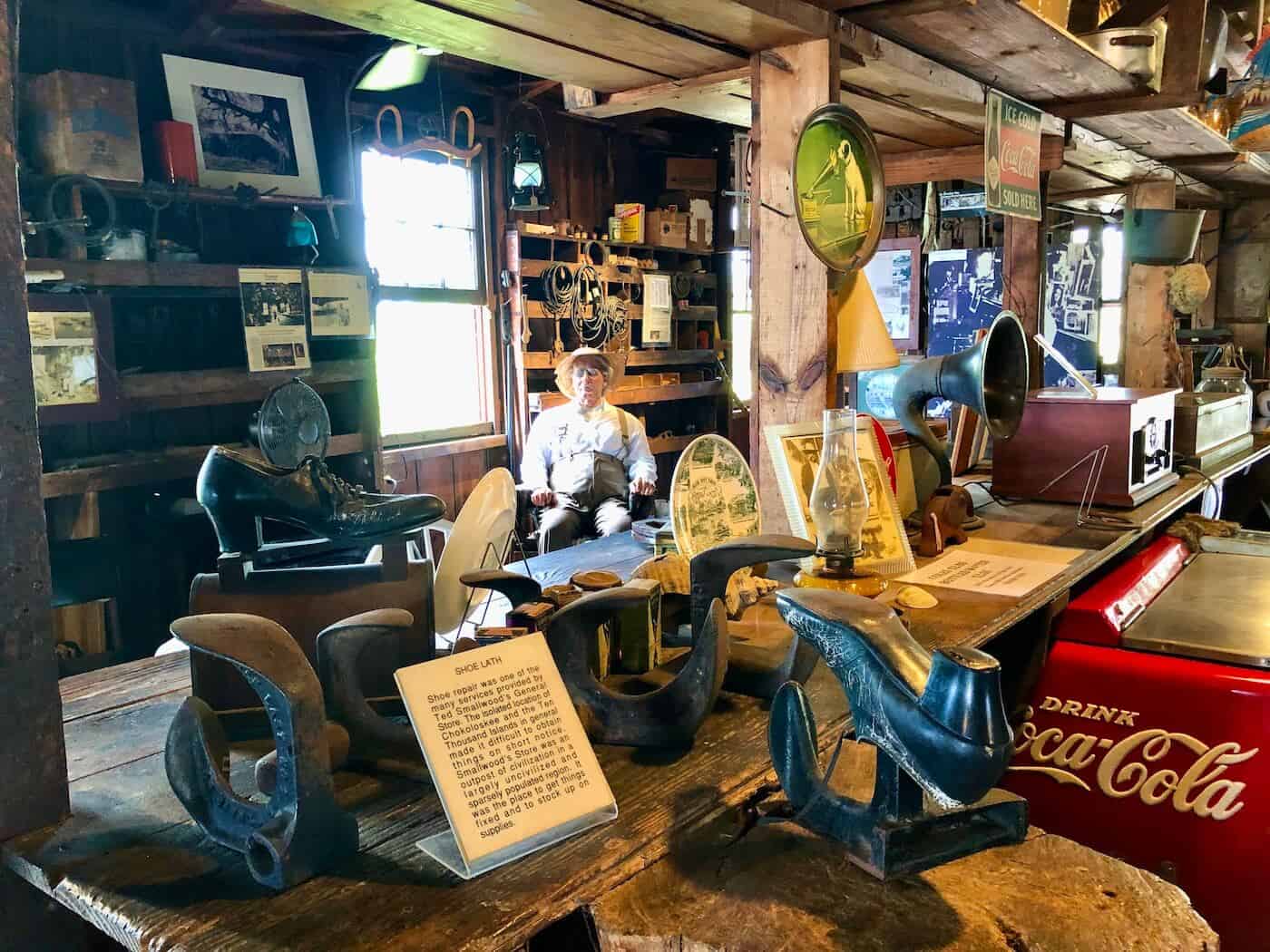
Havana Cafe
Down to almost the end of Route 29 (south of Route 41), and before you arrive at Smallwood Store, you’ll find Havana Cafe, a local gem that serves breakfast and lunch. They feature fresh seafood (caught from their boat) along with chicken and pulled pork sandwiches. There’s a large covered outdoor seating area that offers tables where you’ll be serenaded by birds resting in the trees a few feet from your table.
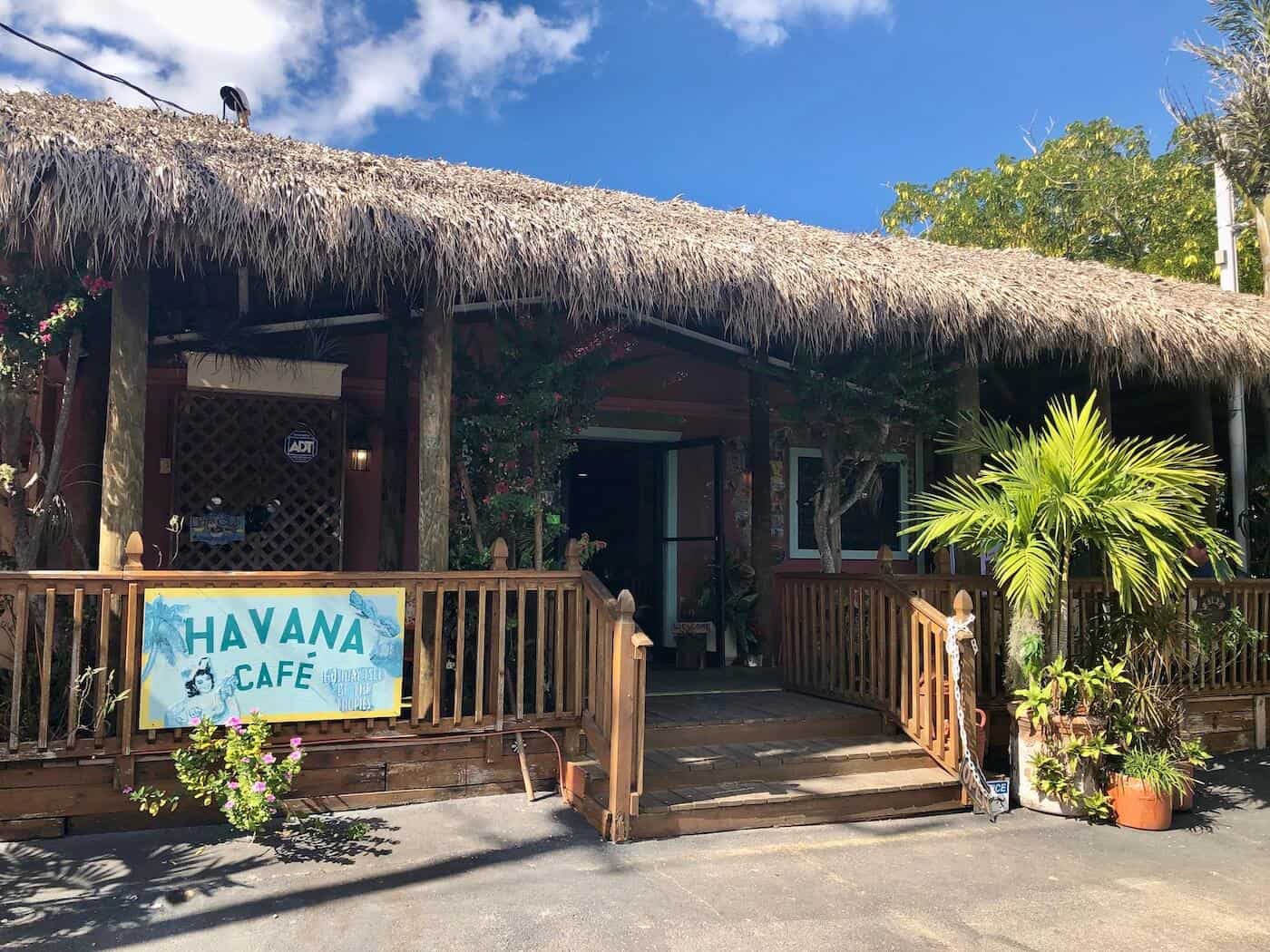
Fort Myers
Fort Myers is about 60 miles north of Marco Island, and it’s an easy drive north on Route 75. It’ll take 75-90 minutes to get there from Marco Island, depending on traffic.
Edison and Ford Winter Estates
The Edison and Ford Winter Estates is a perfect destination if you’re interested in history, science, inventions, and/or nature. When you visit, you’ll be viewing the homes of these two early 20th-century greats: Thomas Edison and Henry Ford. You’ll learn how they forged a close friendship and worked together to better America — and the world.
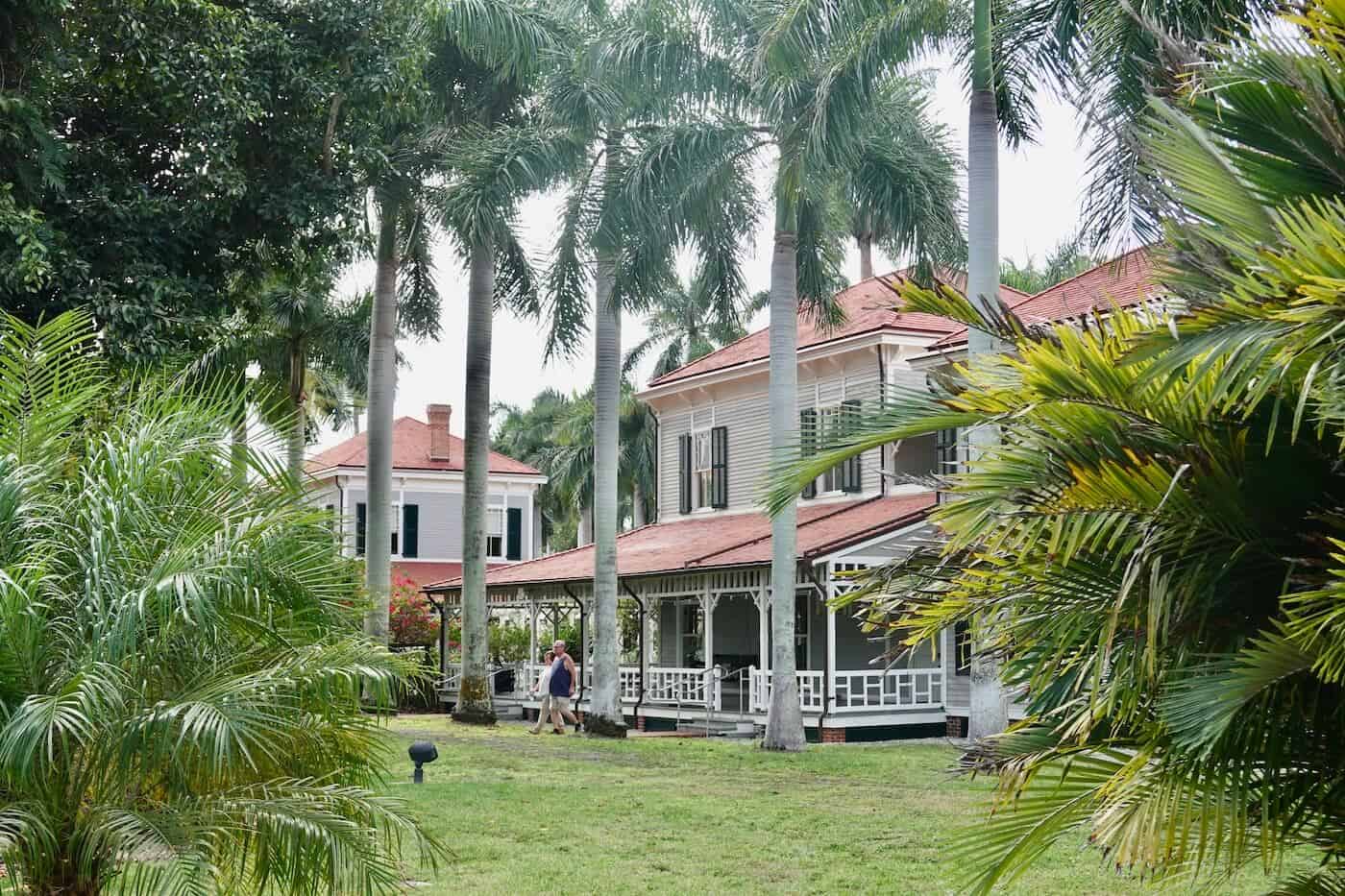
Besides the two homes (Edison actually had the main house and a guest house that you’ll visit), there are beautiful grounds and a museum highlighting their work. Also, there is the laboratory where Edison worked with his team to find a domestic source of rubber, an important component for many American industries — including automobiles, of course.
Read my guide to the Edison and Ford Winter Estates to help you plan your visit.
Manatee Park
Located off Exit 141 on Route 75, Manatee Park is the perfect place to see manatees most days from December through February. Manatees like the warmer water here when the Gulf of Mexico water dips below 68 degrees. They come and go (they’re not captive creatures) in the shadow of a power plant. No luck seeing manatees when we visited, but the grounds are lovely; you can walk along paths through different habitats, and there’s a butterfly garden, too. It might be worth a phone call or a peek at the park’s website to find out about recent manatee sightings before you visit.
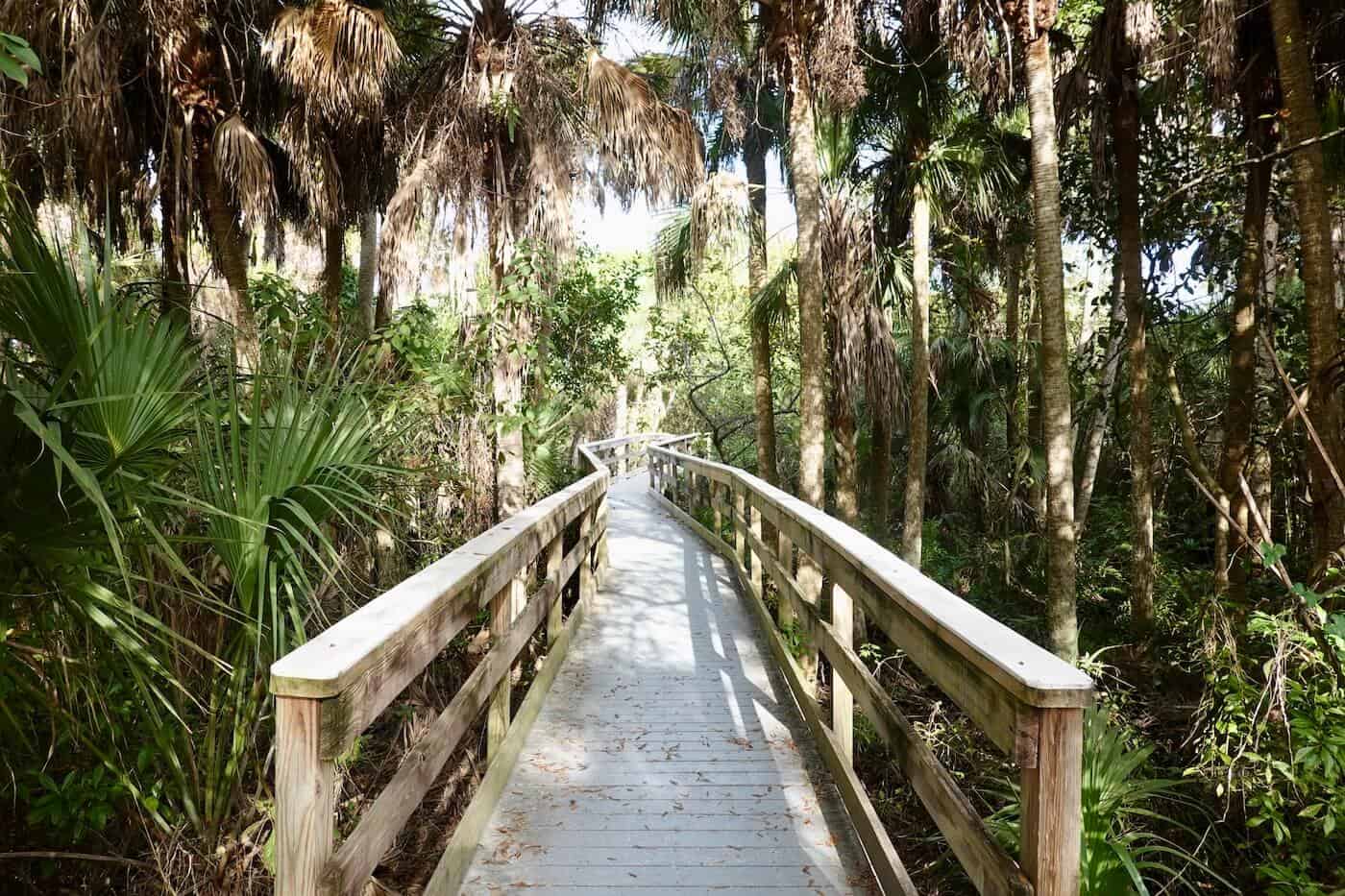
Naples
Naples sits about 18 miles north of Marco Island, and the travel time is about 35-40 minutes.
The city is known for its high-end shops and restaurants. We strolled through town and along the fishing pier, gaped at an amazing Banyan tree, marveled at the highly manicured lawns (how come ours doesn’t look like this?!), and lingered over a delightfully relaxing lunch. For shoppers, check out Fifth Avenue and Third Street South for some places to lighten your wallet a bit.
Sanibel Island and Captiva Island
Sanibel Island and Captiva Island are reached from a causeway from the Fort Myers area. The islands are close to 70 miles north of Marco Island. Plan on a drive of a little over 90 minutes. By the way, there’s a fee ($6 for a car when we visited) to drive onto Sanibel Island. You reach Captiva Island by way of a bridge on the north end of Sanibel Island. Both islands offer relaxing beaches and plenty of residential areas as well as a variety of lodging choices.
Also, be aware that most of each island has a two-lane main thoroughfare. This means traffic can get quite congested and backed up at certain times of the day — like at rush hour when workers and others are leaving the islands for the day. We tried to leave around 4:30 pm, and it was not fun. We were stuck in traffic that didn’t budge for long stretches of time. Later, we learned that we should have stayed on the island till around 7:00 pm and then make our exit.
J.N. “Ding” Darling National Wildlife Refuge, Sanibel Island
The J.N. “Ding” Darling National Wildlife Refuge offers the visitor great viewing of mammals, reptiles, and birds native to the area. Start your visit in the visitor’s center where there are folks who will give you the lay of the land. In addition, there are exhibits with information on the ecosystems at the refuge as well as on wildlife preservation.
From the visitor’s center, you can take a tram or your car (or bike or hike) along the four-mile roadway through the refuge. There are stops along the way to admire native shore birds, walk through a mangrove tree forest, and stroll along a boardwalk that encircles an area where the Calusa Indians, the island’s early inhabitants, lived.
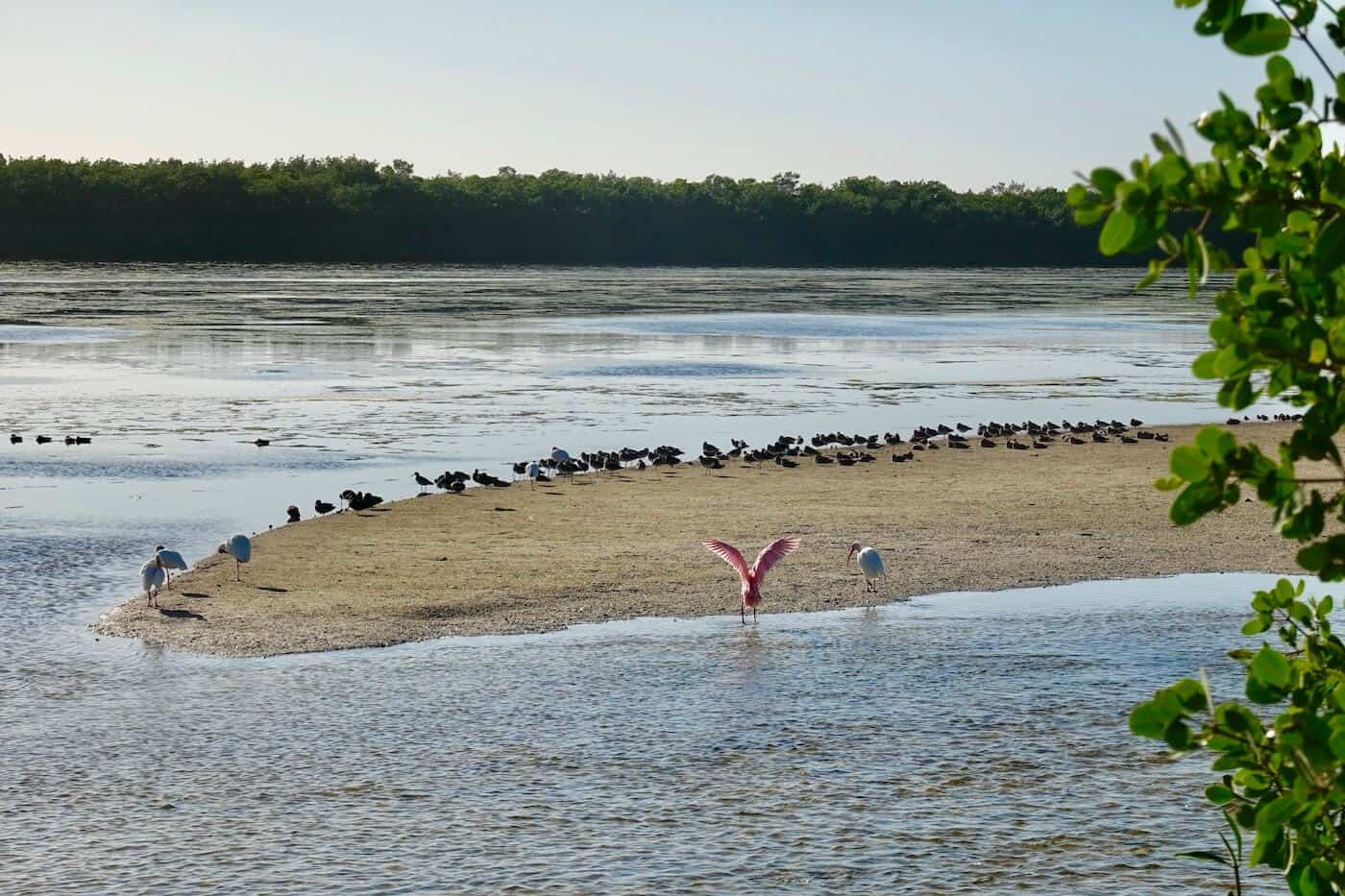
We saw lots of graceful native birds including egrets, ospreys, and even a Roseate Spoonbill that looks like a flamingo. The views are expansive, and the visit was well worth the time.
Why is the refuge called Ding Darling?
This refuge is named after Jay Norwood “Ding” Darling who was a prominent newspaper cartoonist — focusing on political and environmental issues — in the early 20th century. He won two Pulitzer prizes along the way. Furthermore, he played a large role in habitat preservation and game management after President Franklin Roosevelt named him to head the organization that became the U.S. Fish and Wildlife Service.
Fun fact: “Ding” is a derivative of his last name, Darling. He took the first initial and the last three letters to form “Ding.” There, you just learned something that might be in a trivia contest someday.
Sanibel Historical Village & Museum, Sanibel Island
Eight historically restored buildings at Sanibel Historical Village & Museum from the late 1880s through the early 20th century are on the grounds. Each was actually located elsewhere on the island (close to what is today the causeway bridge from the mainland) and moved here to create the village.
The idea was to move some of the historic structures to a place where they could be preserved and enjoyed by those wanting to learn more about earlier life here. Before you begin walking through the building, make sure you view the short video in the visitor’s center because it’ll give you some good background information to help you appreciate what you’ll be seeing afterward.
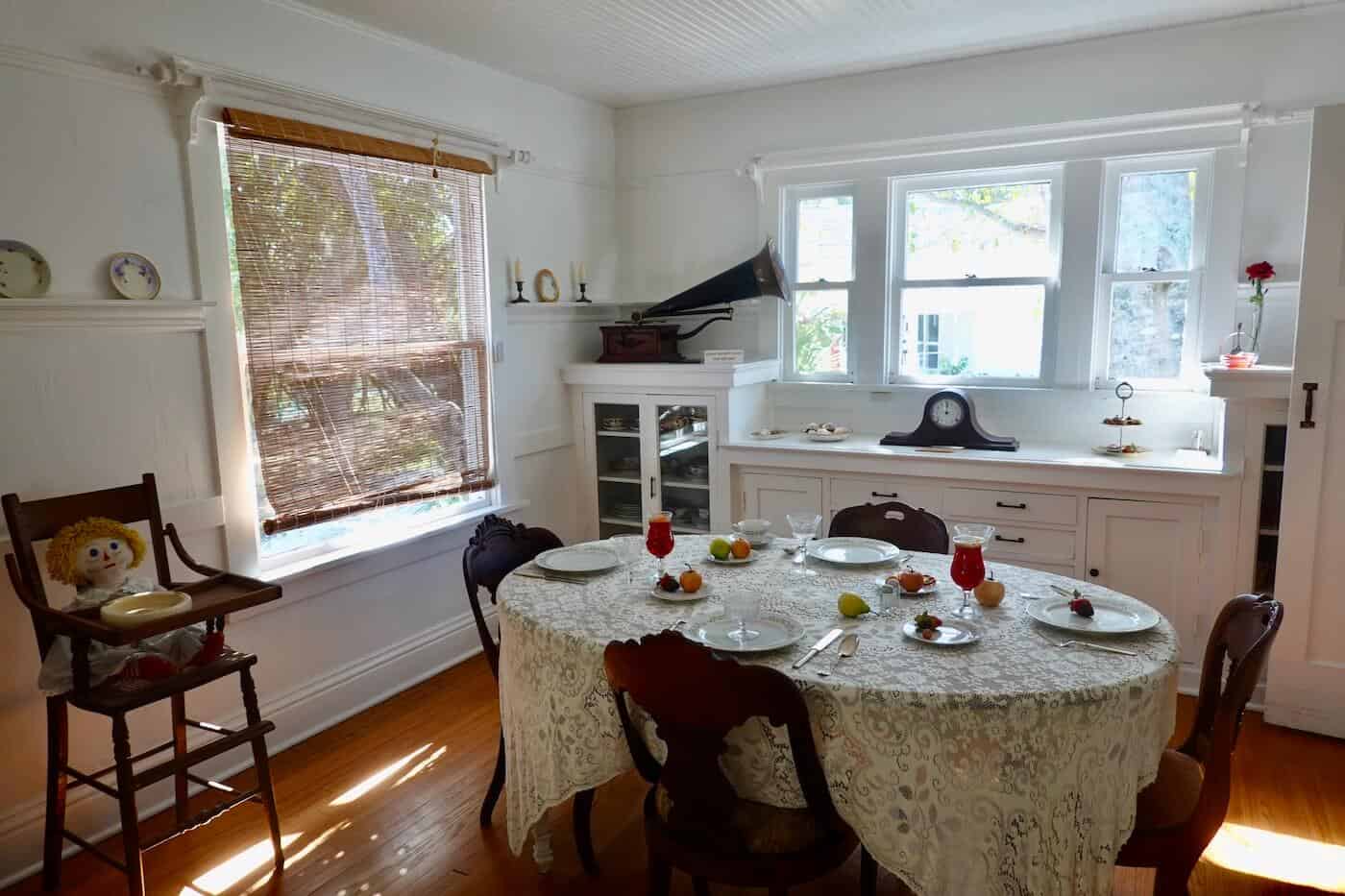
My favorite buildings are the:
- 1926 Morning Glories Cottage. This was a home built from a kit ordered from the 1922 Sears catalog for $2,211. As you walk through it, know that you are walking through the original home. There’s not been any renovation done (other than paint and other minor jobs). You see what the house kit came with along with some purchased upgrades (built-in bookcases, for example) as well as the original light fixtures. It’s furnished as it would have been when inhabited.
- Old Bailey General Store. The store displays artifacts from the early 1900s. As you walk through, you see products lining the shelves. (Remember Lux Rich Soft Suds? Sears Roasted Coffee? Red Dot cigars? I don’t either, but you’ll find them here!). There are also old cash registers and typewriters. You get the picture.
- Sanibel School House for White Children. This one-room schoolhouse from the late 1800s has been restored to reflect its early use. You’ll see the rope that the schoolmarm pulled to ring the bell in the school’s belfry, signaling the beginning of a new school day. The student desks are in perfectly straight rows. Having mentioned this school was for white children, the islanders pushed to integrate schools and did so in the 1960s — the first community to do so in the county.
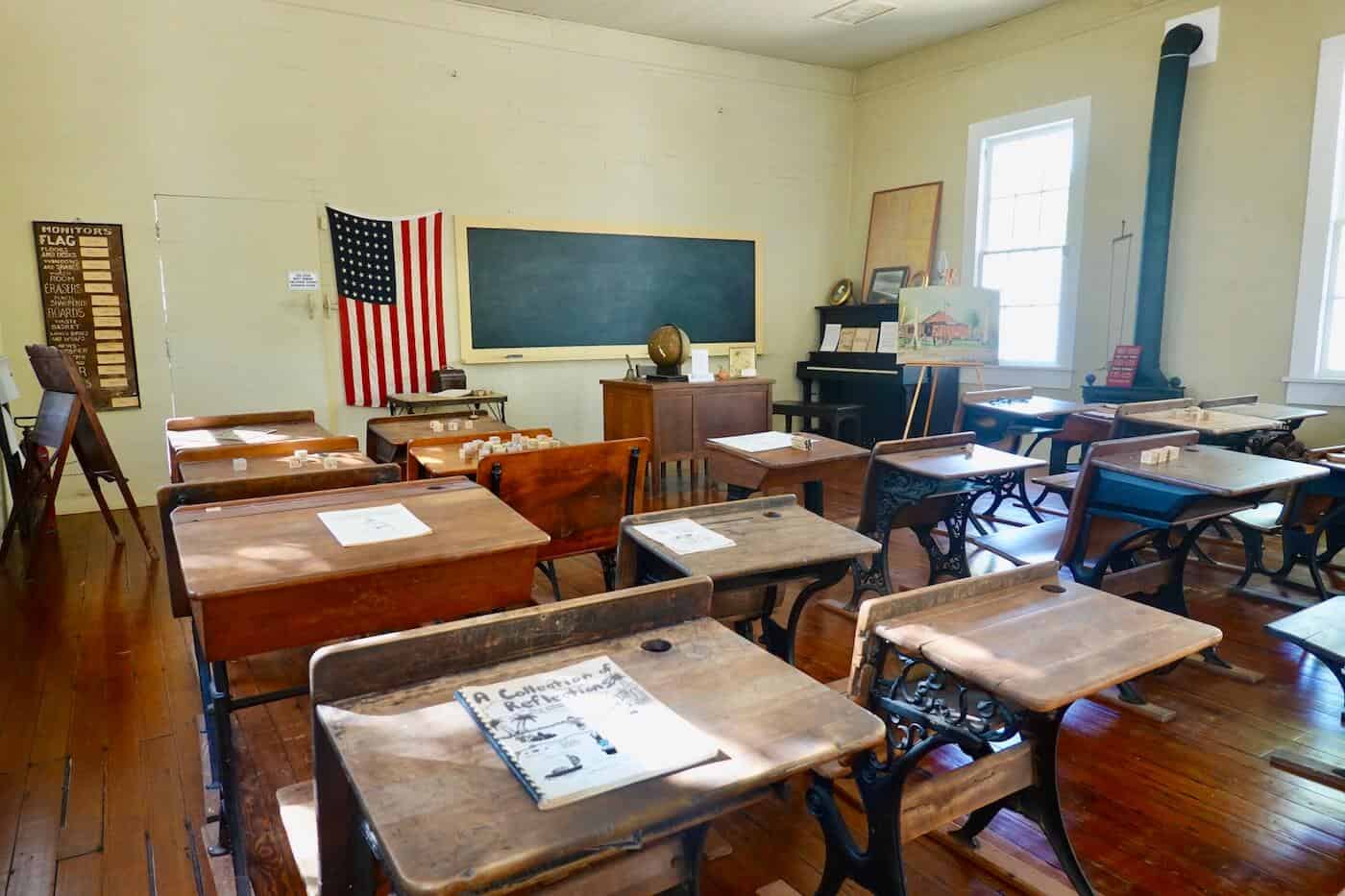
Bailey-Matthews Shell Museum, Sanibel Island
Practically the whole shoreline in southwest Florida is known for its shells. This is especially true on Sanibel Island. And the Bailey-Matthews Shell Museum has an enormous shell collection (originating from all over the world, actually). Also, the museum performs research into malacology, the study of mollusks. Besides informing visitors about shells, they want to learn more about mollusks (soft-bodied water creatures with hard outer shells) and how to protect them. In addition, they have an app that allows you to take a picture of a shell you may find and then learn more about it. Yep, there’s an app for that!
Mucky Duck Restaurant, Captiva Island
Mucky Duck is a favorite eating spot right on the Gulf coast serving seafood sandwiches and entrees in a very relaxed island setting. There’s indoor seating at tables and chairs as well as outdoor seating at picnic tables.
Just beyond the restaurant on the water is Turner Beach where sunbathers get their vitamin D fixes. Many gather here to watch the sun slide into the Gulf. Check restaurant hours, as when we visited, it served lunch until 3:00 pm, closed for a couple of hours, and reopened later for dinner.
More Around Marco Island
Goodland
Located in the southwest area of Marco Island (that you’ll pass while driving down to the Everglades), one lively place is Stan’s Idle Hour Bar which features live music and outdoor seating for its guests Tuesdays through Sundays. Check their website for details.
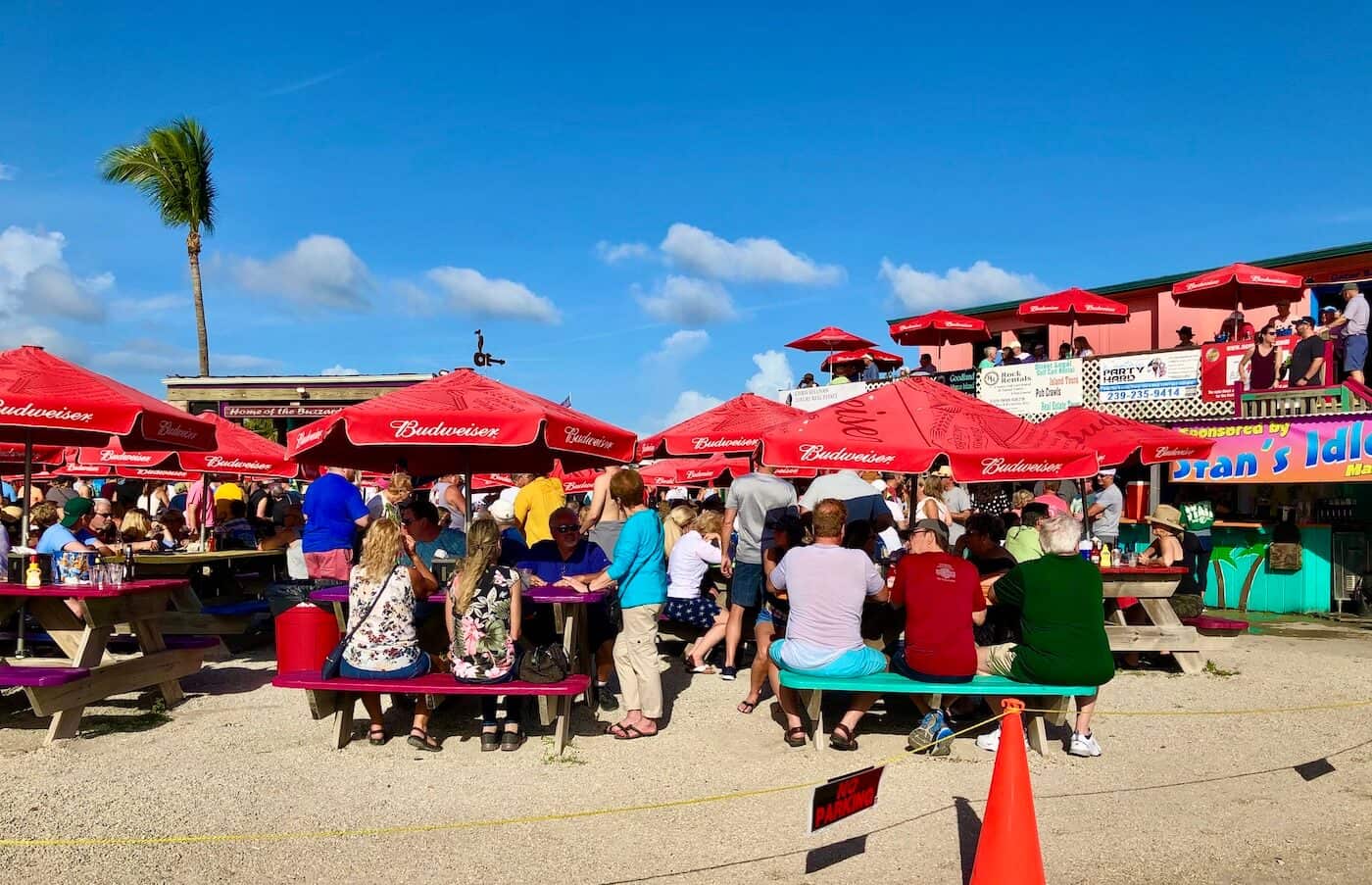
Dining Out on Marco Island
We enjoyed dinners on Marco Island after returning from our daily explorations elsewhere in the area. Since we prefer dining on seafood while staying along the coast, we especially enjoyed Cafe de Marco, Fin Bistro, Oyster Society, and The Deck at 560 (the restaurant at the Hilton Inn resort that boasts sunset views from its deck as well as tasty food).
Where Are the Alligators?
Alligators are freshwater creatures that live in the northern Everglades’ two overlapping ecosystems. These ecosystems are influenced by tides. Saltwater flows from the Gulf of Mexico, but the area gets a lot of fresh water in the form of rain, too. In fact, they get a lot of rain, up to 60″, from around June through October. The freshwater comes from rain overhead as well as the water flowing from inland areas. This raises the water level in the area and dilutes the salt content of the water. Alligators do inhabit the area, and we saw plenty! However, when the salt content in the water is high, they’ll stay for a bit before returning to freshwater to cleanse their systems.
Stone Crab Claws – A Florida Treat
When you’re visiting southwestern Florida, you’ll no doubt come across Florida stone crab claws on the menu. What are they? They are crab claws — very large claws — from crabs that live in the waters off the coast. Actually, the area from Naples to Marco Island to the Everglades is where most Florida stone crab claws are harvested. The peak season for fresh stone crab claws is October through May.
What you’ll actually be eating are just the claws, of course. Here’s how it works: when a crab is caught, its claws are measured. If the claws measure a minimum of 2.75 inches, one claw is broken off at the knuckle. The crab is then returned to the water. It uses its other claw for finding food and defense, and in time, the crab’s body will generate a new claw to replace the one that was harvested.
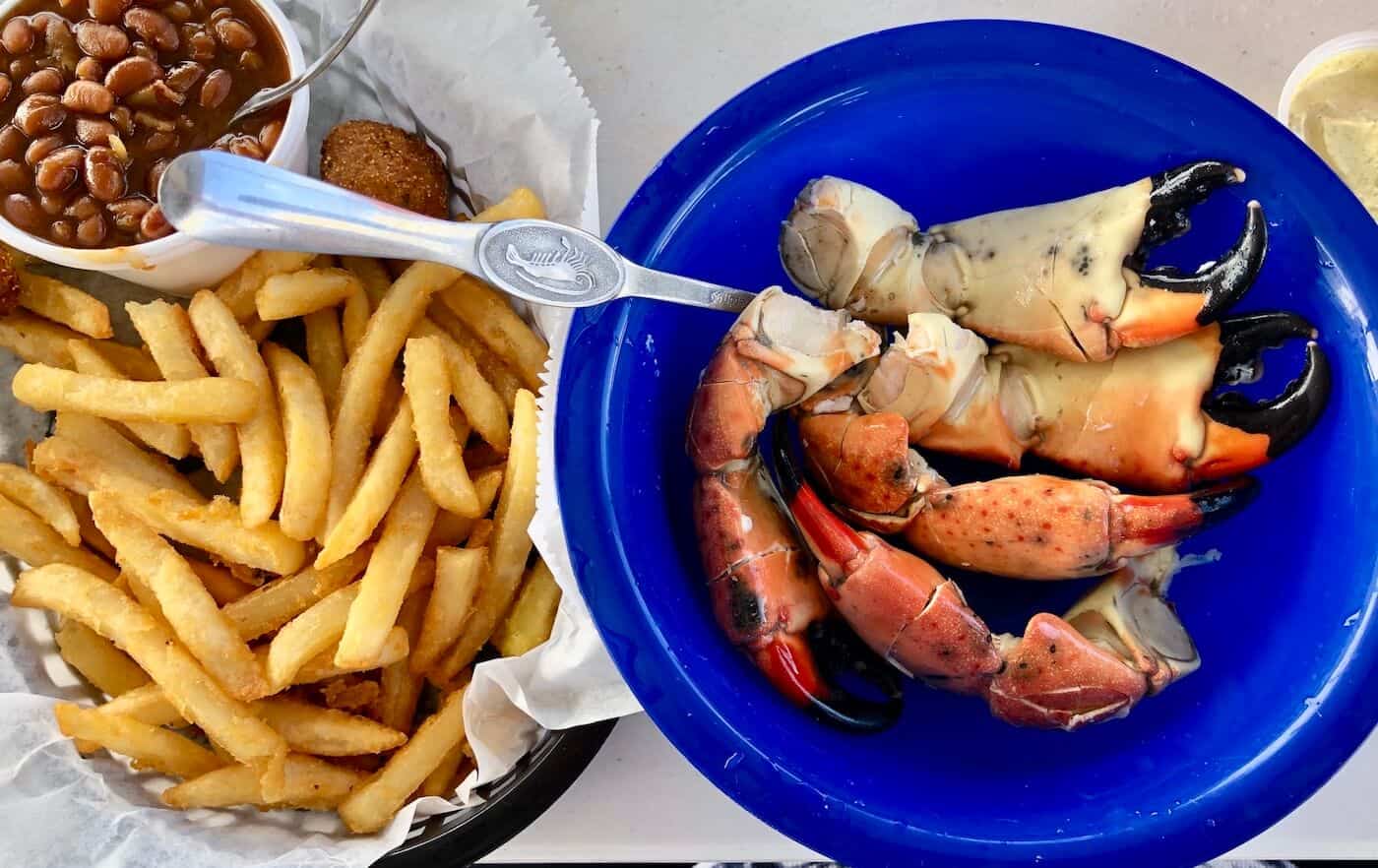
Nearby Attractions
Southwest Florida has great beaches and sights to see. Head north in the state and you’ll find a place with a lot of history, charm, and some good beaches, too! Read my detailed guide to St. Augustine to learn about the oldest city in the United States that still delights visitors today. It’s a great place to spend some time!
Final Thoughts
A trip to the southwestern coast of Florida is a treat — especially if you live in a more northern state and visit in the early months of the year. We found Marco Island to be an ideal spot to park ourselves at a resort on the beach and explore from there. It was a relaxing visit, and we learned so much about this area of our great country.
The Kindness of Strangers
It all began when we were leaving Smallwood Store on Chokoloskee Island. Our rental car wouldn’t start. It simply didn’t turn over. My first reaction was to ask for help. But since Smallwood Store is a bit isolated, there weren’t a lot of people to approach. Jumper cables, anyone? Anyone?
I approached several people who wanted to help us, but they didn’t have jumper cables (a common denominator for those who had rental cars like us). After many anxious minutes ticked by, success! A couple who was visiting did have jumper cables, as they were driving their own SUV. The husband tried to jump our rental car. It didn’t do the trick, though.
On another note, within a few minutes of our meeting, the wife reached into a cooler in their car and gifted us two bottles of ice-cold water. The water was a welcome relief from the heat and our misery.
After learning that our rental car had other issues, the owner of the museum offered to get us some gas. Maybe the rental car’s gas gauge was faulty. Maybe we really didn’t have a half tank of gas that the gauge indicated. The museum owner returned with the gas and poured some in the car’s gas tank. Unfortunately, petroleum was not the issue, either.
Long story short, Robert and Nancy, the couple who tried to jump our car, offered to drive us back to Marco Island — a good 45 minutes away. We accepted their kind offer. The time flew by as Nancy taught me where to spy gators in the gulleys that run parallel to Route 41. We spotted quite a few as the men swapped stories. The drive back to Marco Island was a huge favor because it would take some time for a tow truck to arrive. In fact, the tow truck didn’t arrive until hours later, and we never found out what was the real problem with the car.
The kindness of the lovely couple and the museum’s owner underscore that there are indeed wonderfully kind people in our world. And you never know when they will come into your life! Our experience with them is definitely a high point that Pop and I brought home with us from the trip.
To make sure you remember all the great experiences on your next trip — be it Florida or somewhere else — take lots of pictures and create a photo book of your journey when you return home. You’ll be glad you did!
Comments?
If you’ve enjoyed time in southern Florida (west or east coast), please share your experiences and helpful tips for other readers. Thank you!🙂

